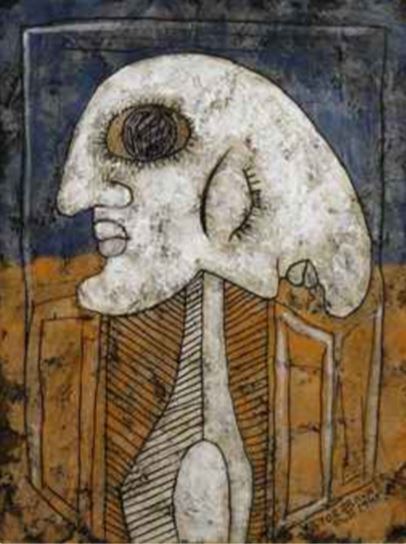*******************
I found that if I planned a picture beforehand, it never surprised me, and surprises are my pleasure in painting.
–Yves Tanguy
*******************
Thought we’d start the new year with a quick look at the Surrealist painter, Yves Tanguy. I can’t say I know a lot about Tanguy, who was born in Paris in 1900, raised in Brittany and died in Connecticut in 1955. He first was attracted to painting in 1922 after seeing a Giorgio De Chirico painting in the window of a Paris art dealer as he was riding a passing bus. He jumped off the bus and went back to study the painting. That was the experience that set off his career.
But with the little info I could quickly glean, I found that we shared a few similarities. One was coming to painting with little training. I consider myself basically self taught and, while he had did some sketching before his brush with De Chirico’s work, Tanguy basically set out on his career as a painter with no formal training. His self taught style developed quickly and was recognizable and celebrated within several years.
He also practiced automatism in his work, which is just a more formal word for having no real plan as you start a painting. I actually didn’t know there was a word for this though I’ve been practicing it for decades now. Much like he said in the quote at the top, I also take great pleasure in the surprises that come from working this way. There’s a form of revelation in working this way that I can’t get when beginning a piece with a predetermined outcome.
Tanguy also described the effects of his automatism this way: The painting develops before my eyes, unfolding its surprises as it progresses. It is this which gives me the sense of complete liberty, and for this reason I am incapable of forming a plan or making a sketch beforehand.
I understand this completely.
He also said: I believe there is little to gain by exchanging opinions with other artists concerning either the ideology of art or technical methods.
I hate to admit it but I kind of agree with this. Don’t get me wrong, I very much enjoy talking with other artists, hearing about their experiences and their breakthroughs. But I don’t really like to talk about my own process or my ideology with other artists. Oddly enough, I am more likely to do this with a group such as at a gallery talk. There, I feel like I am simply describing what I do and not giving advice or direction, which I dislike giving to other artists.
I think art comes from having an idea of what one wants and needs to get from their art as well as their individual knowledge of their strengths and weaknesses as applied to technique and materials. I can’t tell someone what they need from their own art or how it should make them feel. Nor can I tell them how they will better understand what they know about the paints or tools they use. I can give little ideas but they must gain their own insights through their own experiences.
I’ve often said there is no right or wrong in art and this hesitancy to exchange opinions is just an extension of that. What might be right for me or Yves Tanguy might not be right for another artist.
Okay, I know there is a that can be debated here but I am tired of even talking about this right now. Let’s just look at few Yves Tanguy paintings, okay?

















































